Last updated on July 7th, 2021
1. Niagara Falls is the second-largest waterfall in the world, after Southern Africa’s Victoria Falls. Its name comes from the word “Onguiaahra”, which when referencing the Falls, means “thundering waters”. It may also refer to the Niagara River, so in this case, it means “neck”. On a 1656 map, the falls appeared labeled as “Ongiara Sault”, the term obviously a variant of Oguiaahra.
2. Niagara Falls is not one single fall – it’s actually three. These are Horsehoe Falls, Bridal Veil Falls, and American Falls. Horseshoe Falls is the largest of the three falls and it also spans the border between New York and Ontario, Canada.
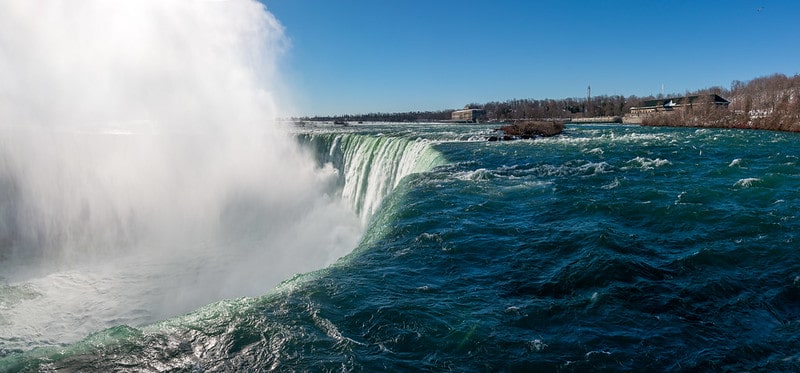
3. Although it lies between the United States and Canada, Niagara Falls is not “owned” by any country. There is, however, an agreed boundary that is visible on the North American map. The boundary divides the three waterfalls between the two countries. Horseshoe Falls is on the Canadian side while American and Bridal Falls are on the American side.
4. Niagara Falls is fed by the waters of the Great Lakes and is estimated to be about 12,000 years old. Five of the Great Lakes supply the waters to the Falls – Huron, St. Clair, Superior, Michigan, and Erie. After the water flows down the waterfalls, it is fed into the 6th Great Lake – Lake Ontario.
5. While not the tallest waterfall in the world (there are about 500 other waterfalls that make that list), Niagara Falls likely has the highest flow rate. Over 700,000 gallons of water falls per second from its crestline.
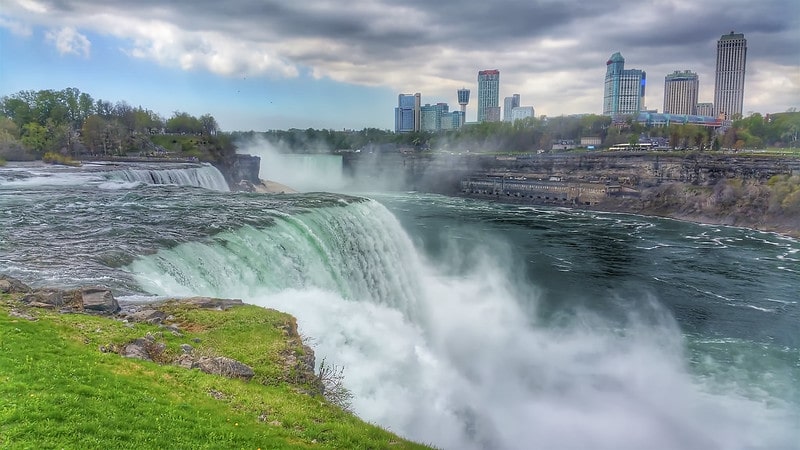
6. The volume of Niagara’s waters creates a natural whirlpool within the river. The eponymous whirlpool is found in the Niagara Gorge and is believed to have formed 4,200 years ago due to erosion. It has a depth of 39 meters. The direction in which the whirlpool spins changes depending on the volume of the water that flows into it.
7. Contrary to what many people believe, waterfalls are not static, The water could move or change its path. Niagara Falls itself is calculated to have moved back by 7 miles within the last 12,500 years. Niagara Falls could very well be the world’s fastest-moving waterfall.
8. There were times when the waters of the Niagara stopped flowing. However, those were the times recorded in history only. These incidents occurred in 1848 and in 1969. In 1848, Niagara stopped due to an ice jam that restricted the flow of the water. This lasted from 30 to 40 hours. In 1969, the water at the American Falls was severely reduced to a trickle by the U.S. Army Corps of Engineers to determine if a rock formation at the area can be removed. Ultimately, they decided to leave it to Nature.

9. Although Horseshoe Falls once stopped flowing due to an ice jam, it has never actually frozen over because of the volume of water it contains. American Falls, on the other hand, is more likely to freeze in very low temperatures because it has a lower volume of water. During especially cold winters, ice could build up and cause a dam of ice that reduces water flow. Any small amount of water that is left usually freezes over.
10. The Maid of the Mist is Niagara Falls’ exclusive boat tour. It was launched in May 1846 as a ferry to cross the US-Canada border. The boat, resembling a barge, was powered by steam from a boiler. It carried as many as 100 passengers. It became a tourist attraction in 1848, changing its course to bring passengers close to the falls.
11. Several boats have plied the tourist route in Niagara Falls. The third and fourth boats, christened Maid of the Mist I and Maid of the Mist II, was in full use for 45 years before a fire destroyed them both in April 1955. They were temporarily replaced by a 40 ft. yacht aptly named “The Little Maid”. In July 1955, the new, 66 ft. long Maid of the Mist was launched, followed by another boat in June 1956. The boats kept the name of their predecessors, although they were technically the 5th and 6th boats, respectively. The Little Maid still serviced tourists until 1956.
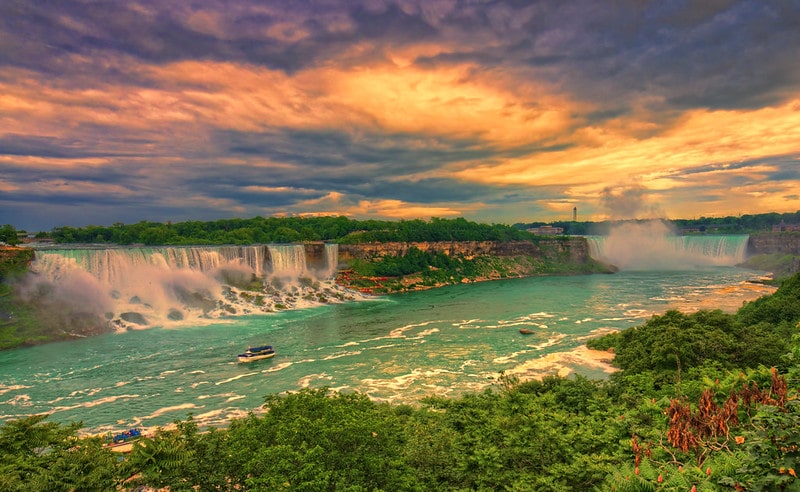
12. Niagara Falls has such a powerful flow of water in terms of speed and volume that it is capable of supplying almost 4.9 million kilowatts of electricity, enough to power as many as 3.8 million homes.
13. The first time water from the Canadian Niagara River was diverted to generate electricity was in 1893. It supplied communities in Chippawa and Queenston. The intake of the hydroelectric plants affects how much water flows over the falls.
14. It is possible to control and even stop the water flowing down Niagara Falls. From April to October, which is tourist season, the volume of waterflow is kept at 100,000 cu.ft. per second both by the New York Power Authority and Ontario Hydro. At night, the water flow rate is reduced to just 50,000 cu.ft. per second.
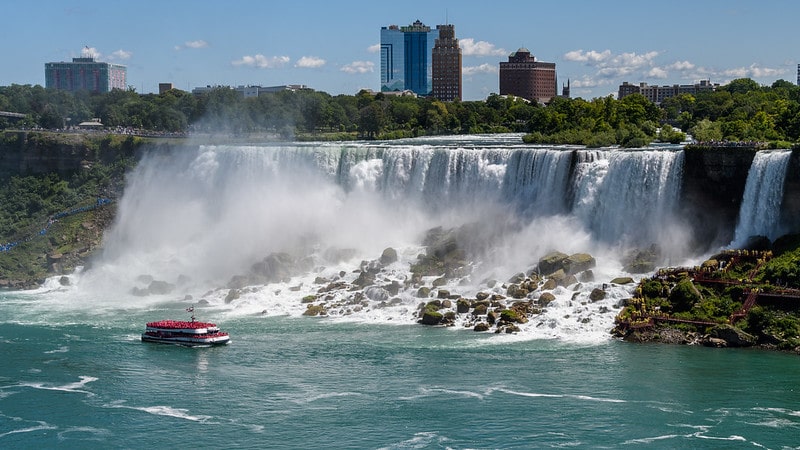
15. Niagara Falls has always attracted many adventurous souls. In the fall of 1829, American Sam Patch jumped down Horseshoe Falls, dropping a good 175 feet into the Niagara River. Patch was known as the Yankee Leaper. He made the plunge and survived – the first man to do so.
16. In October 1901, Annie Edson Taylor positioned herself inside a barrel and allowed it to plunge over the Falls. Taylor was 63 (but claimed to be in her 40s) and a schoolteacher. Hers was the first successful attempt in a barrel.
17. Subsequent attempts to go over the falls were made after Patch’s and Taylor’s feats. Some attempts were unsuccessful, while others were fatal. Some daredevils have also used different methods for the plunge, using a kayak, a jet ski, a steel barrel, a set of inner tubes, and even a large rubber ball.
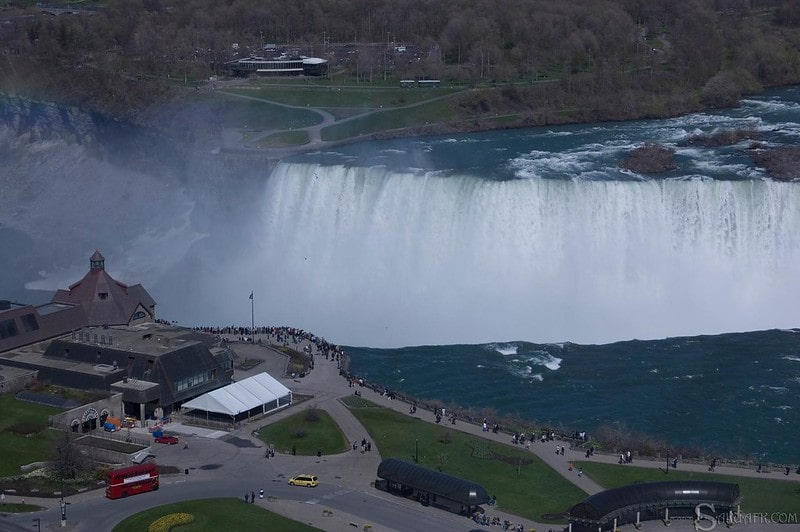
18. As spectacular as many attempts to conquer Niagara Falls were, it is still considered illegal to perform these stunts. Both Canadian and American authorities impose a heavy fine on violators. One such was a Michigan native named Kirk Jones who jumped off Horseshoe Falls in 2003 without any aid – just the clothes he was wearing. He survived and was subsequently fined $2,300.00. He was also banned from ever entering Canada for the rest of his life.
19. Not wanting to miss the excitement, the famous Nik Wallenda also crossed the width of Niagara Falls on a tightrope, without a safety net in June 2012. For the first time, Wallenda wore a safety tether. The stunt was sponsored by the ABC TV network and was initially rejected by Canadian officials, who later allowed the walk as an act to honor all the daredevils of the past.
20. Although Niagara Falls is a grand sight to see regardless of the season, the water flow is generally much increased during summer. The effect is much awesome and stunning. During the night less water flows through the waterfalls because it is diverted to allow for increased power generation intake.
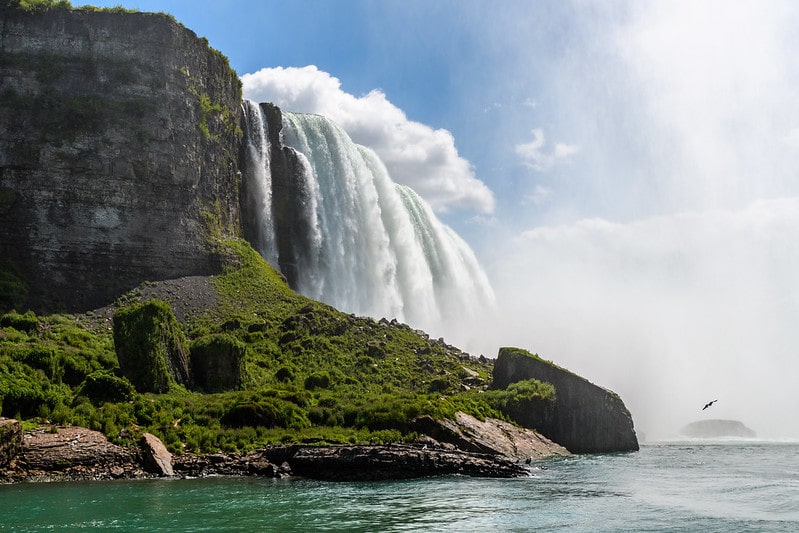
21. There are actually fish in Niagara Falls and they do fall down the waterfall. About 90% of them survive because the foam that forms when the water drops cushions their fall. Their bodies are also shaped and designed to survive the steep drop.
22. Niagara Falls State Park is the official state park located in New York that includes the American Falls, the Bridal Falls, and a part of the Horseshoe Falls. It is the oldest state park in the U.S. that has protected and maintained the area surrounding the falls. The area was once owned by private enterprises that limited public access. Advocates and lobbies for the preservation of the Falls and its surroundings prompted the government to purchase the surrounding land and protect it from exploitation by private individuals and companies.
23. For over 200 years, Niagara Falls was called the Honeymoon Capital of the World. It began in 1801 when Joseph and Theodosia Alston of Albany, New York traveled to the falls with nine pack horses and several servants. Other wealthy honeymooners followed suit. As the cost of travel decreased, so did the popularity of Niagara Falls as a honeymoon destination increased. Today, Niagara brings in newlyweds on their honeymoon every single day.
24. If they want to, honeymooners can obtain a Honeymoon Certificate issued by the mayor of Niagara Falls for free. It is available through the Ontario Tourism Information Centre. The certificate also comes with a discount package for city attractions that honeymooners can enjoy.
25. From the Great Lakes, water journeys down to its final destination in the Atlantic Ocean for about 15 hours. The water that feeds Niagara Falls come from sources such as rain, hail, snow, and groundwater. However, a part of this water is also fossil water, which dates back to the last ice age.
